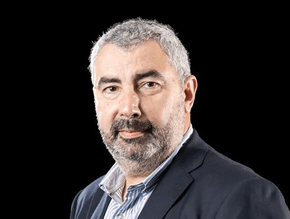Huawei Cloud Delivering Powerful Innovations for Industry

As the world wakes up to the potential of artificial intelligence and large language models, organisations and entire industries are looking to leverage the seismic opportunity.
This generational evolution of digital technology requires reliable, powerful, and innovative foundations, like those offered by Huawei Cloud.
Building on Huawei Cloud’s Pangu 3.0 AI large language model, and using the flexible GaussDB database, means companies can transform their operations and deliver enhanced experiences for their customers.
“I think for Huawei, our large models are different from the other vendors,” explains William Dong, President of Marketing, Huawei Cloud, speaking exclusively to Data Centre magazine at Mobile World Congress (MWC) in Barcelona during Huawei’s Cloud Summit.
Guests at the invite-only event heard from senior Huawei Cloud executives including Jacqueline Shi, President, Global Marketing and Sales Services; Bruno Zhang, CTO; Jamy Lyu, President Media Service Product Department; and William Fang, Chief Product Officer.
The focus was on intelligence, and that inevitably turned to AI, and showcasing fascinating applications from virtual humans to media creation solution.
“Maybe other vendors focus on Generative AI, but we are more focused on AI for industry – helping our customers solve real challenges, real problems,” said William.
William talks about mining, finance, and healthcare as diverse industries that are all benefitting from AI technology – increasing safety, empowering customers, and saving lives.
“AI vendors should be using their strengths to help industry find solutions based on AI,” states William.
That is why the Pangu 3.0 large language model offers bespoke solutions perfectly suited to different industries, and built on a “5+N+X” three-layer architecture.
The bottom layer, or Layer 0, consists of five foundational models: Natural Language Processing, Computer Vision, multimodal, prediction, and scientific computing.
On top of that, the Layer 1 layer consists of N industry-tailored models, including Pangu models for government, finance, manufacturing, mining, and meteorology. Customers can also train their own models using their datasets.
Then Layer 2 provides pre-trained models for specific industry scenarios and tasks that can be used ‘off the shelf’ – covering everything from chatbots to weather prediction.
William explains that the five foundation models are based on open-source data, while Layer 1 models provide the public and general industry models that customers can then add their own data and their own workflow to create a bespoke solution.
“For the industry models, when you go deep in this way, you find that it’s not AI itself, it is data,” says William. “Every model can learn the public data, but if you want to use the AI models to meet your own requirements, you need to have high-quality data. If you have this, then with our technologies, we can train the models dedicated for you.”
These large language models use enormous amounts of data and also require robust cloud and flexible database services that meet customers changing needs.
Large language models need reliable cloud
This is one area that sets Huawei apart.
“We are the cloud provider, not only providing the database software, but also the database storage hardware,” says William.
“Based on the synergy of the hardware and software, we can provide a strong, consistent solution. Based on this solution, we can guarantee the data is consistent,” he says.
“With GuassDB, the architecture is a distributed cloud database, so we are elastic. And I think, if you were to compare GuassDB to other database products, we can give the customer better reliability, a high availability database. This is very important for customers.”
William goes on to explain that AI is driving companies to introduce new applications, and these are cloud-related. Bearing this in mind, it is better for the database to use open architecture or distributed cloud architecture.
Huawei may be in a position to provide the software and hardware, but William says that does not mean they are a one-stop shop for all solutions a customer may require.
“This is not our strategy. For us, we hope that if they want to find something they need, they can find it with Huawei Cloud,” says William.
“But cloud is different from legacy products. It’s not only the product, it’s the ecosystems. With cloud, customers have the API market and can choose the solutions they like. We believe this open system is the way forward in this exciting future.”
When asked which industries he feels will benefit most from switching to GaussDB, William highlights banking and insurance.
He says banks face huge challenges from fintechs and disruptors, and that is why traditional banks need to embrace open systems and are migrating to solutions like GaussDB.
On a final note, William states he does not believe that AI will replace humans.
“AI is our tool, AI is our assistant,” he says. “A camera may be more and more advanced, but if you want to find a very good photo, it’s not that the camera is best, it’s the person who takes the photo – and has the skill or knowledge to handle it.”
Huawei Cloud certainly has that skill, knowledge, and experience.






